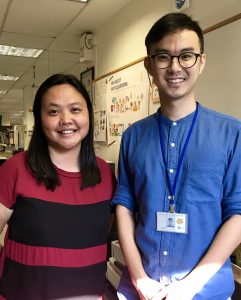Why Singapore’s English Teachers Should Embrace Singlish, Not Fight It
Is it time for Singaporean educators to embrace Singlish as a legitimate learning tool? What the Research […]
Read More
Contributed by Mrs Anna Koh and Mr Soh Yang Jie, Teck Ghee Primary School, for SingTeach Issue 66.
The inquiry approach encompasses a range of teaching approaches which involve stimulating learning with a question or issue and thereby engaging learners in constructing new knowledge and understandings. What this means for teachers is change. We have to change the way we teach, the way we view our pupils’ learning and the way we co-construct knowledge with the pupils. When we first embarked on this journey, there was apprehension as we, as teachers, felt that we might not be up to mark to carry out this approach.
We were required to adjust the way we teach and shift the paradigm from a teacher-directed style to a student-centric one. This was fundamentally different from the way we were taught and had taught. For a few of us, we had to forgo methods that had proven to be effective in producing results for many years.

At the start, one of our priorities was to get the buy-in from the teachers that this approach was essential to prepare students for the future. We had to convince our colleagues about the need to move from regurgitation of content to construction of new knowledge. The support from the community and school leaders was vital to the success of this project. We had to create the time and opportunity for professional dialogues on a weekly basis.
The discussions were rich and meaningful as teachers built on each other’s experiences and ideas. Teachers entered the classrooms with more confidence and a bag of possible misconceptions from the students. In addition, the Science Head-of-Department (HOD) weighed in to address problems that were surfaced and helped teachers to clarify doubts and provided in-depth information about the learning. He facilitated the sharing well and related student learning to real-life scenarios. Everyone shared his or her thoughts and experiences freely due to the positive climate.
On another note, one main area of change we had to be mindful was to ensure that students had more space for exploration and discussion. For teachers, we had to ask more questions and refrain from giving too many answers. More focus were placed on the reasons behind those students’ answers rather than the accuracy of the answers.
In other words, we gave more attention to the ‘why did they give this answer?’ instead of ‘what was wrong with this answer?’ Allowing the students to explain helped them to deepen their learning and provided information about any misconceptions. However, there must always be a convergence for their experiences and the lesson objectives so that students could make better sense of their learning.
Stepping into the classroom, the first challenge that we faced was the different profiles of the students. While we were enacting the lesson based on the previous years’ lesson, we realized that we needed differentiated instruction. This was because some students required more room for exploration during the lessons, so as not to stifle their creativity, while others might need more scaffolding before they could make connections between what they were learning and the planned activities.
Technology, while playing an important role in garnering feedback from pupils, might be more effective for pupils who were familiar with it. This again, required us to make improvisation to the lesson such that the pupils were able to achieve the learning outcomes regardless. Some teachers used post-it notes to get feedback while others made use of online tools like Nearpod to gather feedback. The use of such tools motivated students to share their answers as they knew that their voices were heard. This heightened and empowered students to improve on their answers that were visible to their classmates.
In conclusion, the project was a great learning experience for the students and teachers alike. For a subject with a nature to be alive, the new approach had made it really come to life. It served the intent of grooming our students to think critically and beef up their process skills.
Acknowledgements
This study was funded by Qualcomm® Wireless Reach™. The goal of Wireless Reach is to create sustainable programs that strengthen economic and social development through the use of mobile technology with a focus on education, entrepreneurship, health care, the environment and public safety.